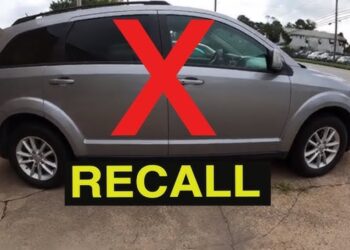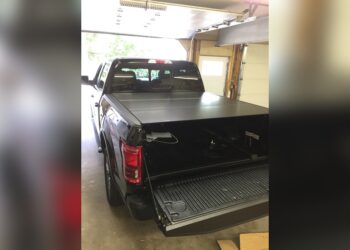If your ABS light remains on after sensor replacement, it could indicate a lingering issue within the system. It’s essential to address this promptly to ensure vehicle safety.
Ensuring your car’s anti-lock braking system (ABS) is fully operational is crucial for maintaining control during emergency braking situations. The ABS light on your dashboard is a vital indicator that something may be amiss with this safety feature. Replacing a faulty sensor is a common fix, but if the light persists, it suggests further diagnostics are needed.
This could be due to multiple reasons such as residual system errors, faulty wiring, or even a malfunctioning ABS module. Quick attention to this matter will not only keep your car’s safety features intact but also prevent potential damage to other components. Remember, driving with an illuminated ABS light can compromise your vehicle’s braking efficiency and should be avoided until the issue is resolved.
Introduction To Abs Light Issues
Understanding ABS Light Issues is critical for safe driving. Your car’s Anti-lock Braking System (ABS) warns you of potential issues with a dashboard light. When this light stays on after replacing a sensor, it signals a problem. This could put you at risk. Let’s explore common triggers and the importance of timely action.
Common Triggers For Abs Light Illumination
Several factors can make the ABS light stay on. It’s not just about faulty sensors. Here are the top reasons:
- Dirty or damaged sensors: Contaminants affect sensor readings.
- Broken wires: Frayed or corroded wires disrupt signals.
- Faulty ABS module: A malfunction here affects the whole system.
- Low brake fluid: This essential fluid must be at the right level.
- Worn brake components: Old parts compromise ABS function.
Importance Of Addressing Abs Light Warnings
Ignoring the ABS light can lead to danger. Here’s why you must act:
- Prevents accidents: ABS helps control the car during sudden stops.
- Ensures brake efficiency: The system optimizes braking under all conditions.
- Avoids costly repairs: Early detection saves money on repairs.
- Maintains car value: A functioning ABS system keeps your car’s value intact.
Seek a professional mechanic’s help when the ABS light stays on. Your safety depends on a fully functional ABS.
Credit: www.triumphrat.net
Initial Steps After Sensor Replacement
Initial Steps After Sensor Replacement involve careful checks. Your ABS light might still be on. Let’s explore why and fix it.
Verifying The Installation Process
It’s crucial to verify the sensor’s installation. A wrong step can cause issues. Follow these steps:
- Turn off your vehicle.
- Locate the ABS sensor on your wheel.
- Check if the sensor is properly attached.
- Ensure no wires are loose.
- Look for any visible damage on the sensor.
If everything seems right, move to the next step.
Ensuring Compatibility Of The New Sensor
Not all sensors fit every car. Make sure yours is compatible. Here’s how:
- Check the part number of your new sensor.
- Compare it with your car’s model and year.
- Consult the car’s manual or an online database.
If the sensor matches, your ABS light should go off after a short drive. If not, the sensor might be the wrong type for your car.
Troubleshooting The Abs System
ABS light issues can be confusing. You’ve replaced the sensor, but the light stays on. It’s time to troubleshoot further. We’ll guide you through the steps to diagnose the problem.
Performing A System Reset
Sometimes, a simple system reset is all you need. Follow these steps:
- Turn off the engine.
- Disconnect the car battery.
- Wait for 15 minutes.
- Reconnect the battery.
- Start the engine and check the ABS light.
This process can clear any lingering errors. If the light turns off, you’re all set. If it stays on, more work is ahead.
Checking For Fault Codes With A Scan Tool
A scan tool can find hidden issues. Here’s how to use it:
- Connect the scan tool to the OBD-II port.
- Turn on the ignition, don’t start the engine.
- Follow the tool’s prompts to read codes.
- Note any ABS-related codes.
Codes guide you to the problem. Fix the issues the codes point to. Clear the codes afterwards. Start the car and check the ABS light again. If it’s still on, there may be deeper issues at play.
Inspecting Related Components
Did your ABS light stay on after changing the sensor? It could be time to check other parts. Let’s dive into what else might cause this issue.
Examining Abs Rings And Magnets
The ABS system relies on rings and magnets for speed data. These parts can rust or get dirty. Clean them well and check for damage.
- Look for cracks or missing teeth on the ring.
- Inspect magnets for debris or misalignment.
Assessing The Condition Of Brake Components
Brake parts work with the ABS. They must be in good shape. Worn components can trigger the ABS light.
| Part | Check For |
|---|---|
| Brake Pads | Wear and thickness |
| Brake Lines | Leaks or damage |
| Fluid Level | Proper fill level |
Electrical Issues And Fixes
Electrical Issues and Fixes can puzzle car owners. Your ABS light staying on after a sensor replacement points to deeper electrical problems. Let’s tackle these issues head-on.
Testing Wiring And Connections
Start by checking the ABS system’s wiring and connections. A fault here can keep the ABS light on. Follow these steps:
- Turn off your car and ensure safety.
- Locate the ABS sensor wiring. Consult your car’s manual.
- Use a multimeter to test for continuity. No continuity means a break in the wire.
- Check for corrosion or damage at connections. Clean or repair as needed.
This process helps find and fix wiring issues. It might turn the ABS light off.
Solving Grounding Problems
Grounding issues can also trigger the ABS light. A good ground is crucial for electrical systems to work right. Here’s how to fix grounding problems:
- Find the grounding points related to the ABS system.
- Clean any rust or dirt from these points.
- Ensure the ground wire is firmly attached and not damaged.
- If needed, replace the ground wire.
Fixing grounding problems can often solve the ABS light issue.

Credit: www.newbeetle.org
Hydraulic Problems In The Abs
ABS light issues can be a headache. Even after sensor replacement, the light might stay on. It often points to hydraulic problems within the system. Let’s delve into common hydraulic faults and how to fix them.
Identifying And Repairing Leaks
Leaks in the ABS can cause the light to stay on. Fluid loss affects pressure and performance. Check all ABS lines and connections for signs of leakage. Look for wet or oily surfaces around the ABS components.
Once identified, repair leaks promptly. Replace damaged lines or seals. Ensure all connections are tight. This prevents air from entering the system.
Bleeding The Abs Module
Air in the ABS system affects brake performance. It can keep the ABS light on. Bleeding the module removes trapped air. Use a scan tool to cycle the ABS valves. This ensures thorough bleeding.
Follow these steps:
- Locate the ABS bleed valves.
- Attach a clear tube to the valve and a container.
- Open the valve and press the brake pedal.
- Close the valve before releasing the pedal.
- Repeat until no air bubbles appear in the fluid.
Always use fresh, manufacturer-recommended brake fluid. Check the fluid level after bleeding. Top off if necessary.
Software And Calibration
Software and Calibration play a pivotal role in the proper functioning of your vehicle’s ABS system. After replacing an ABS sensor, the light on your dashboard might still be illuminated. This could mean that the new hardware requires software updates and system calibration to communicate effectively with your vehicle’s computer. Let’s delve into how updating the ABS module software and calibrating the ABS system can resolve this issue.
Updating The Abs Module Software
Just like your smartphone needs updates, so does your ABS module. Automakers release software updates to improve system performance and fix bugs. These updates ensure that new sensors work well with your car’s ABS system.
- Check for updates: Use a diagnostic tool to find any available software updates for your ABS module.
- Install updates: A professional technician can install the latest software, ensuring your ABS system functions correctly.
Calibrating The Abs System
Calibration is like teaching your ABS system to understand the new sensor’s language. This step ensures that the ABS system reads the sensor data accurately.
- Perform calibration: Use specialized equipment to calibrate the ABS system after installing a new sensor.
- Test drive: After calibration, take your vehicle for a test drive to ensure the ABS light turns off and the system works.

Credit: www.reddit.com
When To Seek Professional Help
Replacing an ABS sensor is usually straightforward. But sometimes, the ABS light stays on. This can be puzzling. It’s a sign that a deeper issue may exist. Knowing when to call in a professional is key. Mechanics have the tools and expertise to diagnose and fix complex problems. Below we dive into the scenarios where expert help is crucial.
Complex Issues That Require A Mechanic
- Multiple Faulty Sensors: More than one sensor might fail.
- Wiring Problems: Damaged wires or connections can cause issues.
- ABS Module Failure: The central unit could be defective.
- Brake System Issues: Problems beyond the ABS system might trigger the light.
Benefits Of Professional Diagnostics
| Benefit | Description |
|---|---|
| Accurate Identification | Experts can pinpoint the exact problem. |
| Specialized Tools | They use advanced tools for diagnosis. |
| Time-Saving | Professionals resolve issues quickly. |
| Guarantee | Work often comes with a warranty. |
Preventive Measures And Maintenance Tips
Preventive Measures and Maintenance Tips help keep your ABS system in top shape. After replacing an ABS sensor, the light might stay on if issues persist. Proper care can prevent this. Learn how to maintain your ABS system with these tips.
Regular Abs System Checks
Regular checks are key to a healthy ABS system. They catch problems early. This prevents costly repairs later. Below, find steps to keep your ABS system working well:
- Check ABS sensors for dirt or damage.
- Test the system with a scanning tool.
- Inspect wiring for wear and tear.
- Look at brake fluid levels often.
Best Practices For Sensor Maintenance
Sensor maintenance is crucial for an error-free ABS light. Follow these best practices:
- Clean sensors during regular service.
- Avoid harsh chemicals that might harm sensors.
- Handle sensors with care when replacing.
- Use quality parts for replacements.
Maintain these parts, and your ABS light should stay off. Remember, a functioning ABS system means safer driving.
Frequently Asked Questions
Why Is My Abs Light Still On?
The ABS light may remain illuminated if there’s an issue with the system’s electrical connection, a blown fuse, or a malfunctioning ABS module.
Can Wheel Alignment Affect The Abs Light?
Incorrect wheel alignment can indirectly trigger the ABS light by causing uneven wear on wheel speed sensors or their circuits.
How Do I Reset My Abs Light?
To reset the ABS light, you can try disconnecting the car battery for a few minutes, or use a specialized scan tool to clear the fault codes.
What Causes Abs Sensor Failure?
ABS sensor failure is often due to dirt buildup, damaged wires, or corrosion, impacting the sensor’s ability to accurately read wheel speed data.
Is Abs Sensor Replacement Costly?
The cost of ABS sensor replacement varies, but it’s generally an affordable repair, with most expenses coming from parts rather than labor.
Conclusion
Navigating the puzzle of an illuminated ABS light post-sensor replacement can be challenging. Ensuring proper installation and seeking professional advice are key steps. Remember, vehicle safety is paramount. Trust the process, and don’t hesitate to consult experts for a secure and reliable solution.
Safe driving starts with proactive vehicle maintenance.

















